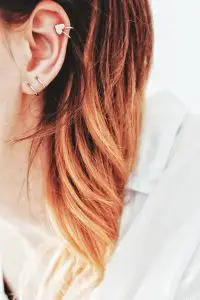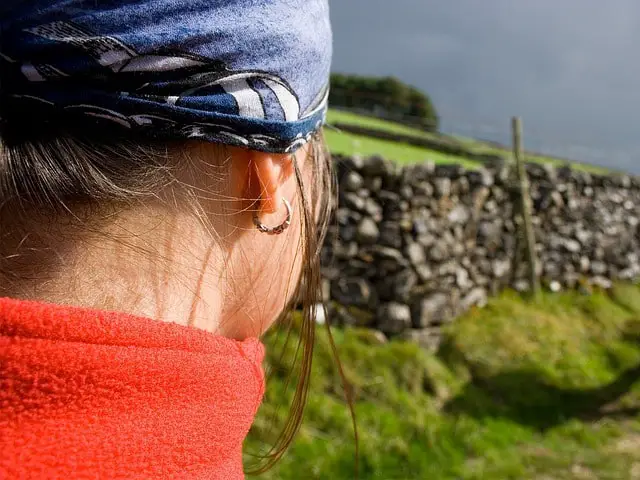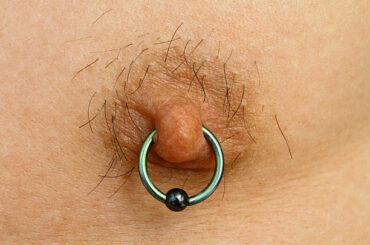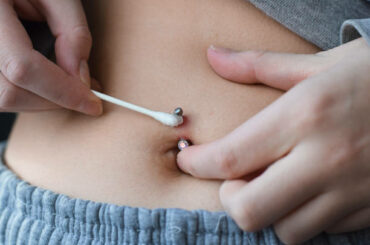Is it normal for a new lobe piercing to itch? If you have almost gotten your piercing, this might be a question. But don’t worry, let’s find the answers to your question today. So read until the end.
Contents
Is it normal for a new lobe piercing to itch?
The direct answer to the above question is “Yes.” But before proceeding more, let me tell you that lobe piercing refers to ear piercing. Or, in other ways, it is a cartilage piercing. We all know that the skin in the ear area is so soft and tender. With the piercing, it gets soft and tender and lets you itch the area. This itching is a sign of the commencement of the healing process.

Other results of itching.
As I mentioned earlier, now you are in the healing process. Due to the itchiness, the lobe areas are getting red. This Redness is also a regular thing in the healing process. And the other stranger thing is appearing of fluid crusts. These fluid crusts are also a regular thing. And also try to bear the pain that occurs due to these scenarios.
More about itchiness.
Some piercings are more likely to cause discomfort than others. For example, if you have an earlobe piercing smaller than your other lobe piercings (like a belly button), the skin around it can be more sensitive because there is less room for movement in that area.
Itchiness may also be caused by irritation from jewelry rubbing against tender tissue beneath your eyebrow or underarm area where your piercing is located if this happens regularly without being treated with anti-itch creams such as cortisone or hydrocortisone cream.
Reasons for itchiness.
Infection
Infection is one of the most common causes of nipple and areola itchiness. Bacteria, viruses and fungi can cause infections. They can also occur if you have pierced your nipple or areola too far from its base or too shallow (or deep).
If you notice that your piercing is infected, it’s best to see a doctor immediately so they can treat it appropriately. If this doesn’t help with decreasing your discomfort and itchiness, then there are other options available:
• Soaking in warm water until circulation returns.
• Applying an anti-itch cream such as hydrocortisone cream.
• Splinting temporarily during healing time so air passes through more efficiently.
Reaction to the piercing
If you’re allergic to the jewelry or uncomfortable for any other reason, your piercing may be causing itchiness.
If this is happening to you and your piercing has been in for a while, you should try removing jewelry and applying an anti-itch cream such as hydrocortisone cream or one of these topicals:
• Petroleum jelly (Vaseline)
• An ice pack wrapped in a cloth diaper
The piercing has healed wrong.
The first thing to consider is whether you’re healing the piercing correctly and safely. If your lobe has healed wrong or too tight, it can cause an infection and irritation. Here are some other things that could be causing this itching:
• Piercing has been done too high or low on your earlobe – Your lobe piercing should sit just above where the cartilage begins on either side of your ear. It could also be higher than the average for some people, but not all! If yours sits lower than usual (below where the cartilage ends), then there’s no real reason why that part wouldn’t heal correctly after getting pierced.
However, if it’s too high up on one side but not both sides. Then it could lead to problems when trying to remove any jewelry from those areas later on, so keep this in mind when choosing where exactly you want these pieces placed whenever possible!

Complications in lobe piercing and how to identify them.
Complications or signs of getting infected.
Many signs say that your piercing is almost infected. So hurry up and check whether you are suffering from the following:
• Redness
• Swelling
• Crusty discharge
• High heat
• Thick pus
• Itching along with fever
If you have many of these complications at once, try to consult your doctor immediately. But if your doctor is unavailable for an unavoidable reason, do the following.
1. Clean your hands thoroughly in warm water and soap.
2. After washing your hands, combine one cup of water with one-half teaspoon of salt.
3. Using a cotton ball or pad, apply the saltwater solution directly to the piercing site.
4. Apply an antibacterial ointment or cream once the piercing site has dried.
5. To prevent your skin from becoming stuck on the jewelry, gently twist the earrings several times daily.
Many suggest trying the above steps for about two weeks before consulting a doctor. But due to my personal experience, I suggest you meet your doctor as soon as possible before the condition gets worse.
Image credits: Pixabay.com (Featured) / Pexels.com
Also read: Can you wear air pods with a daith piercing: impressive ideas about 23s’ piercings





